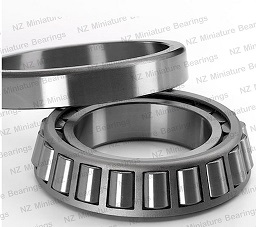

1) Taper roller bearings are designed to handle both radial and axial loads. The angle of the outer raceway of the bearing cone is gradually tapered from the large end to the small end, which allows for a combination of radial and axial loads to be supported.
2) They are used in a wide range of applications, including automotive, construction, mining, and agricultural equipment.
3) Taper roller bearings can be single-row, double-row, or four-row designs, with different designs being suitable for different applications.
4) They are typically made from high-quality steel, with precision grinding and heat treatment used to ensure optimal performance and durability.
5) Taper roller bearings require periodic lubrication to maintain their performance and extend their lifespan. The type and frequency of lubrication will depend on the specific application.
6) One of the benefits of taper roller bearings is that they can be preloaded to minimize any play or clearance in the bearing assembly. This can improve the precision and accuracy of the equipment they are used in.
7) Taper roller bearings are generally more expensive than other types of bearings, but their ability to handle high loads and their durability make them a cost-effective choice for many applications.
a) High Load Capacity: Taper roller bearings can withstand high radial and axial loads, making them suitable for applications that require heavy-duty performance.
b) Precision: These bearings have the ability to handle both radial and axial loads with precision, making them ideal for applications that require high accuracy and precision.
c) Durability: Taper roller bearings are designed to be durable and long-lasting, with a design that can withstand high stress and wear.
d) Easy to Install: These bearings are relatively easy to install and can be fitted into a wide range of applications with minimal effort.
a) Higher Cost: Taper roller bearings can be more expensive than other types of bearings due to their high load capacity and precision design.
b) Maintenance: These bearings require periodic maintenance, including lubrication, to ensure optimal performance and prevent failure.
c) Heat Generation: Taper roller bearings can generate a significant amount of heat during operation, which can cause premature wear and failure.
Taper roller bearings are commonly used in applications that require high load capacity, precision, and durability. They are used in a wide range of industries, including automotive, construction, mining, and agricultural equipment. These bearings are also used in applications where high accuracy and precision are required, such as machine tools, robotics, and aerospace equipment.
a) Fatigue Failure: This is the most common type of failure in taper roller bearings, which occurs due to repeated loading and unloading of the bearing.
b) Wear: Taper roller bearings can experience wear over time due to friction between the bearing surfaces.
c) Corrosion: Exposure to moisture and corrosive substances can cause corrosion and damage to the bearing surfaces.
d) Improper Installation: Incorrect installation can cause the bearing to fail prematurely.
e) Lack of Lubrication: Lack of lubrication can cause excessive heat and wear, leading to bearing failure.
Live Chat